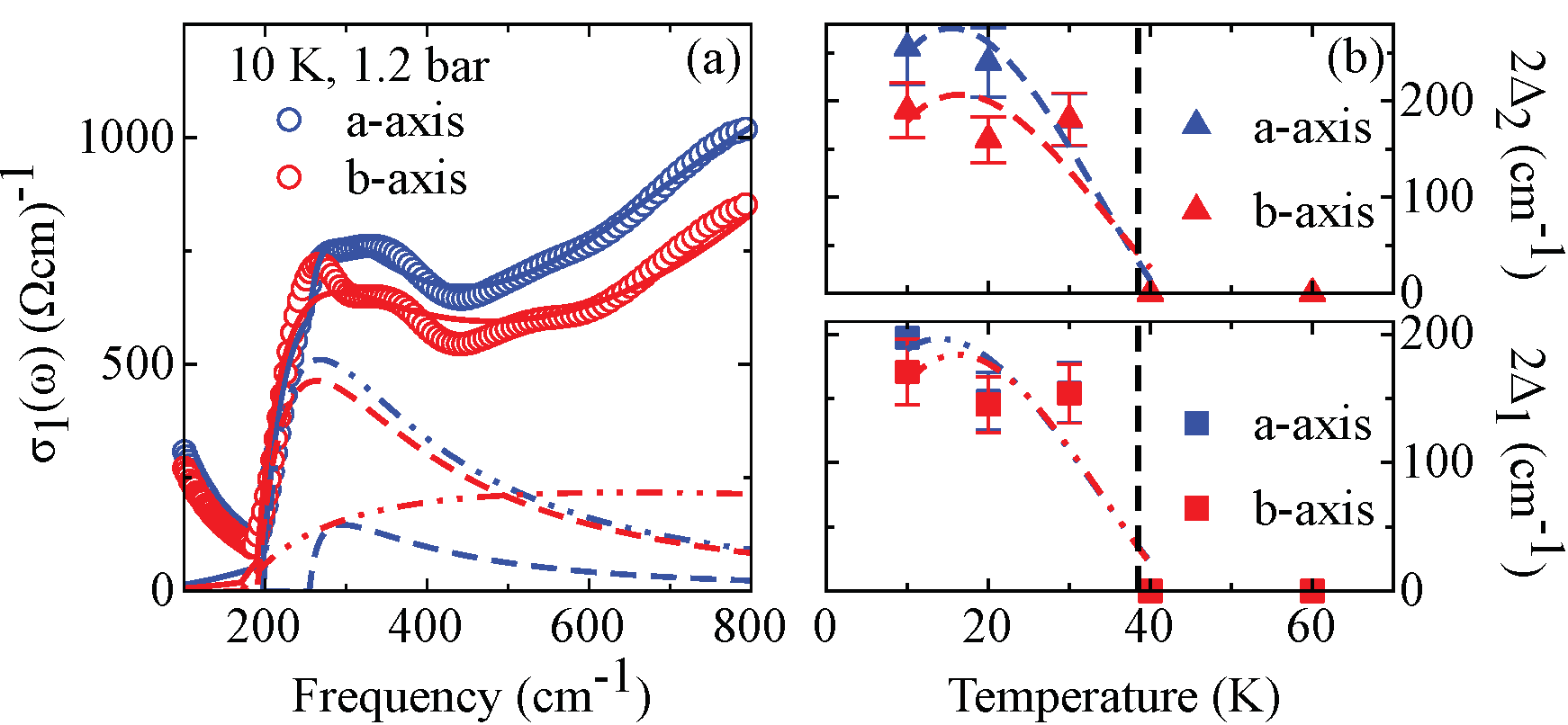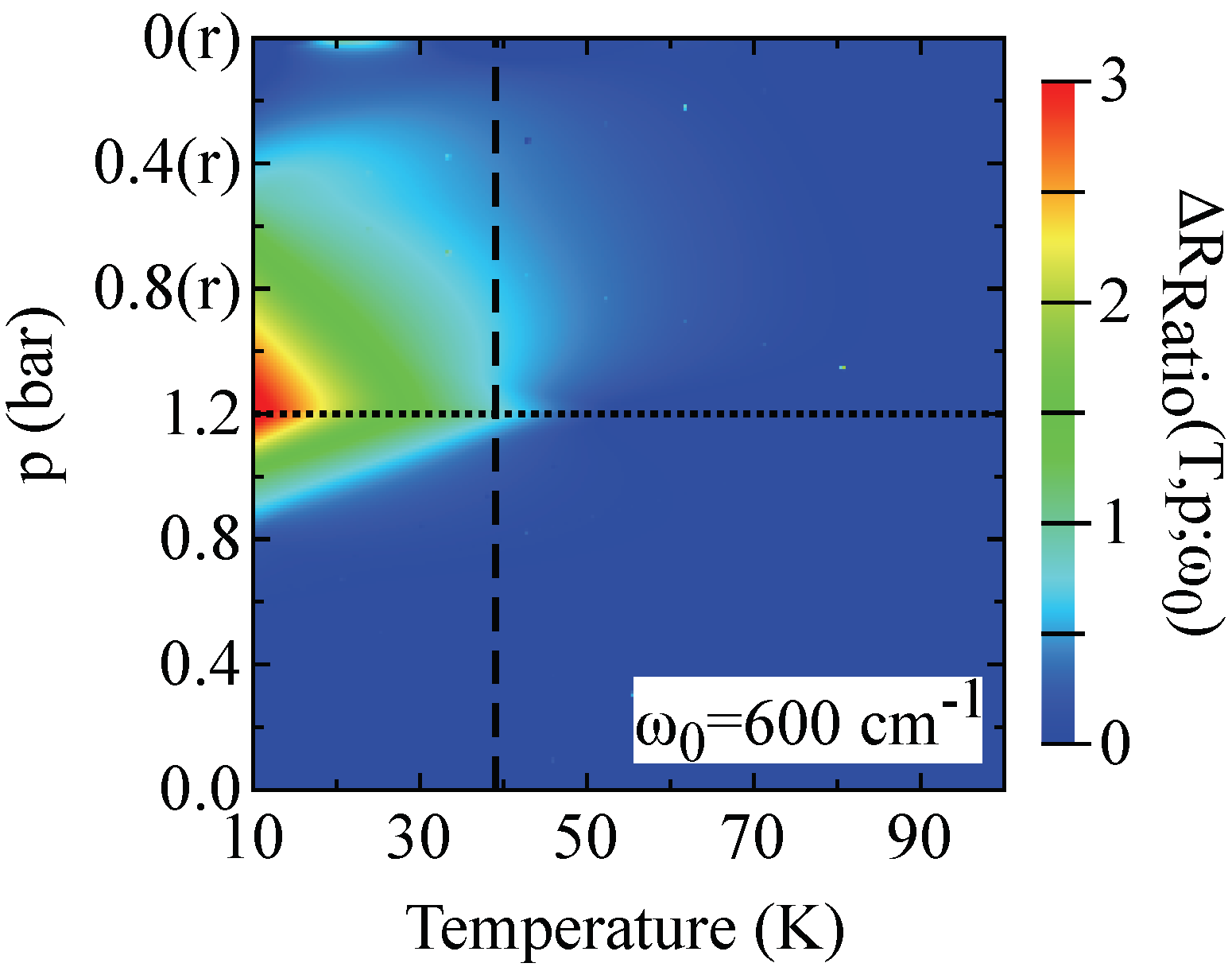Anisotropic superconducting gap in optimally doped iron-based material
While the relationship between superconductivity and nematicity has been debated theoretically, there remains a need to better experimentally scrutinise the influence of nematic fluctuations on the electronic properties over a large energy interval and also over a temperature range extending under the superconducting dome, which is not accessible by elastoresistive technique. To this purpose, we choose the optimally hole(K)-doped 122 material, which is an ideal composition in order to address the impact of nematicity as driven by an external symmetry breaking field. This is imaged in our experiment by the stress-induced anisotropy of the electrodynamic response.
The present optical investigation describes novel results of reflectivity measurements over a very broad spectral range and as a function of temperature that probe the optical response to variable uniaxial stress (p). We show that the p-induced optical anisotropy in the infrared spectral range, which is reversible upon sweeping the applied p, occurs only below the superconducting transition temperature (Fig. 2.24). These findings demonstrate that there is a large nematic susceptibility at optimal doping, which extends right under the superconducting dome.
Moreover, our novel data may shed new light on the direct connection between quantum critical nematic fluctuations and unconventional superconductivity. Indeed, an additional asset of our work consists in the capability to elaborate on the energy scale(s) of the superconducting state. This is possible within the Mattis–Bardeen approach, modified in order to take into account arbitrary scattering. Remarkably, our study implies the presence of p-induced anisotropic gaps between both axes (Fig. 2.25). We are tempted to speculate that the electronic structure of optimally K-doped 122 materials is extremely susceptible to symmetry-breaking stress below Tc, possibly consistent with recent observations of nematic superconductivity.

